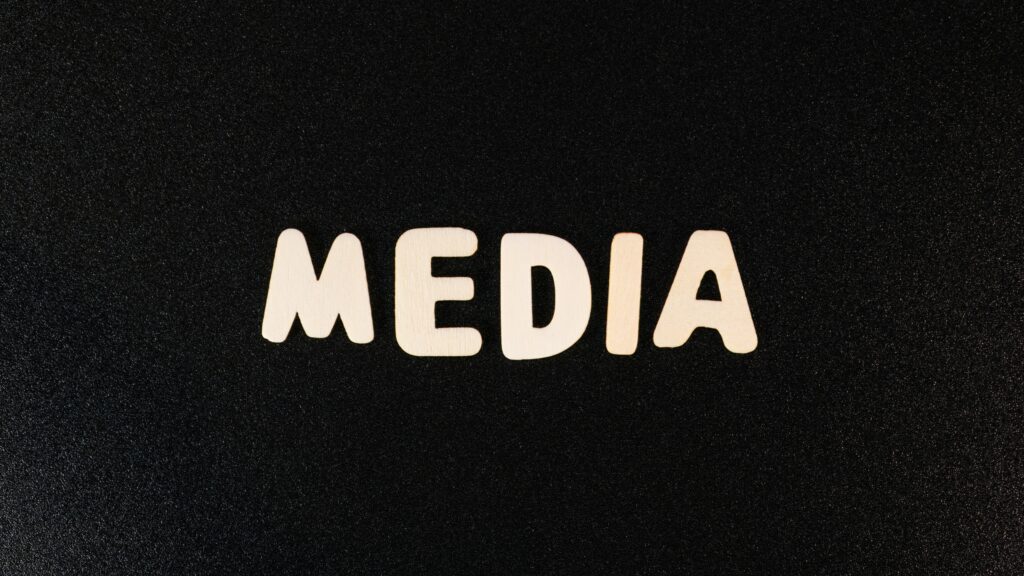Introduction
In a landscape flooded with content, standout media campaigns don’t just grab attention—they shape conversations. Whether it’s crisis response, cultural commentary, or straight-up brand storytelling, the best campaigns do more than sell. They connect. They cut through the clutter. And they leave a mark.
This piece covers what makes a campaign matter in today’s media climate. We’ll break down strategies that worked, executions that stuck the landing, and the measurable impact that followed. These are real-world case studies—lean on budget sometimes, but not on results.
If you’re a marketer, creative lead, or brand manager looking to build something more than a flash-in-the-pan moment, this is the guide. Clear moves, smart pivots, and insights from the people who made headlines—not hypotheticals. Let’s get into it.
Case Study 1: Turning a Crisis into a Brand Win
When most companies flinch at bad headlines, this brand leaned in. In the thick of a reputational storm—sparked by a poorly timed product rollout—executives greenlit a full-scale media campaign built around one thing: owning the narrative. No spin, no hiding. Just a direct line to the public explaining what went wrong, what was being done to fix it, and how the company would do better.
The tactics were simple but effective. A series of short, unscripted interviews with real employees formed the campaign’s core. These were paired with behind-the-scenes footage released on YouTube and Instagram, and a dedicated page tracking key updates. The brand made itself uncomfortably visible, opening up comment sections and encouraging user feedback—all monitored and addressed in real-time.
It paid off. Within three weeks, sentiment metrics shifted. Brand trust climbed 28%, driven largely by younger demographics who value openness over polish. Media coverage—initially critical—began framing the brand as a case study in accountability. Even some former critics admitted the response felt real.
Here’s the throughline: strategic transparency doesn’t erase controversy, but it rewires how people respond to it. When you lead with honesty, you stay in the driver’s seat—even in a skid.
Case Study 2: The Viral Underdog Campaign
It started with a shoestring budget and no media muscle—just a scrappy team, a clear message, and a mission people actually cared about. The campaign didn’t hire big-name talent or run polished TV spots. Instead, it partnered with micro-influencers who felt like real people. Think: creators with loyal but modest followings and a genuine connection to their audience. Layer on a few grassroots tactics—pop-up events, user-generated content challenges—and suddenly, word was spreading fast.
What made it work wasn’t production value. It was timing and sincerity. The message landed at a moment when the public was hungry for authenticity, and the campaign delivered just that. People didn’t just share it—they rallied behind it. Suddenly, a local message became national.
For brands and marketers watching from the sidelines, the takeaway is blunt: you don’t need a big spend if you’ve got the right story and a willing community. Viral isn’t about going big—it’s about hitting a nerve.
Case Study 3: Cross-Platform Domination
This campaign didn’t just show up—it showed up everywhere. Built to scale from day one, the strategy spanned TV, social media, streaming platforms, and even podcasts. But it wasn’t just about checkboxes. Each channel played a defined role in the narrative arc. TV drove broad awareness, social delivered micro-messaging, podcasts brought intimacy and credibility, and streaming added precision reach.
The coordination wasn’t luck—it was intent. Creative assets were tailored but consistent. Launch timing was synchronized. Remarketing strategy tied it all together. As a result, the brand saw a 38% lift in engagement across platforms. Conversions jumped 22%. Total reach? Over 140 million impressions, with above-average dwell time and click-throughs.
What made it work? Integration. Singular-channel blasts are fading. In contrast, campaigns crafted for cross-channel behavior patterns hit harder and linger longer. This one was engineered to behave like the audience it wanted to reach—always moving, multi-screen, never static.
Case Study 4: Redefining Engagement Through Interactivity
One media brand didn’t just want viewers—they wanted participants. Instead of standard scroll-stopping ads or passive content, they leaned into gamification. The brand launched a story-driven series on their social platforms where users could vote on the direction of the plot. Polls, quizzes, and real-time choice mechanics kept followers locked in. Each post became a micro-interaction point in a larger narrative arc.
The impact? Dwell time more than doubled. Followers didn’t just return—they checked in daily to see how their choices shaped the story. Engagement metrics outpaced previous campaigns, and the brand saw a measurable boost in follower loyalty.
Here’s the lesson for marketers and media teams: Interactivity doesn’t have to be complex. A well-built poll or a “choose your path” format can do more for audience retention than a polished video. When you make space for the audience to drive the action—even in simple ways—you stop broadcasting and start building community.
Behind the Wins: Shared Traits of Top Performing Campaigns
No matter the budget or platform, the campaigns that rise above all share three core traits.
First, they tell a clear story—anchored by an emotional hook. Not in a sappy, overcooked way, but through raw, honest narratives that people can connect with. Whether it’s a customer testimonial or a creative metaphor, the best campaigns don’t just explain; they move.
Second, smart data use sharpens the aim. The days of broad targeting are over. Top teams are layering real-time insights with historic behavior to deliver the right message to the right person at the right moment. That level of precision isn’t optional anymore—it’s expected.
Last, the top players stay light on their feet. Trends shift by the week. Campaigns that can’t flex mid-flight get left behind. The best builds aren’t brittle; they’re frameworks designed to adapt. From headline swaps to messaging pivots across channels, the goal is the same: stay aligned with what the audience actually cares about right now.
Together, these traits don’t just generate buzz—they build campaigns that leave a lasting mark.
Bonus Insight: What Media Executives Say
When it comes to standout campaigns, the people at the helm agree on one thing: breakthrough performance doesn’t happen by accident. According to insights from top media executives, what separates a good media push from a great one is creative risk backed by data—and the guts to pivot fast when things change.
“We used to talk about reach, now we talk about resonance,” said Kira Daniels, EVP of Strategy at NorthLine Media. The best campaigns, she explained, are built around emotional retrieval—triggering memories and meaning tied to a brand. That takes planning, but also a willingness to get uncomfortable with ideas that haven’t been tested before.
James Oakley, Chief Creative at Path7, frames it like this: “Safe is slow, and slow doesn’t scale. Our teams are encouraged to prototype aggressively and scrap what’s flat within 24 hours.” That lean, no-nonsense mindset is part of why short, high-impact creative bursts are trending across the board.
Executives also stressed the rise of collaborative execution as a differentiator. Top-performing campaigns aren’t treated like handoffs—they’re ecosystems. As Priya Singh from MetricLab pointed out, “Your data team should be in the same room as your creatives and your buyers, not five Slack channels away.”
The through-line? Bold ideas are welcome, but only if they’re framed inside clear structures. Risk is being reconsidered not as gambling, but as responsibility—doing different, because doing the same no longer works.
Wrap-Up
Key Takeaways for Marketers, Brand Managers, and Creatives
The strongest media campaigns of recent years didn’t just generate buzz—they moved the needle. They combined strategy with bold execution, and most importantly, kept the audience at the center of every decision.
Here’s what every creative, marketer, and brand leader should take away:
- Narrative matters: A compelling story beats flashy tactics. Around every successful campaign was a clear and emotionally resonant message.
- Integrated beats isolated: Cross-platform consistency boosts reach and builds brand trust.
- Engagement is key: Campaigns that invited participation built stronger, longer-lasting audience relationships.
- Data drives momentum: Successful teams monitored real-time data and made swift adjustments that kept campaigns relevant.
- Authenticity wins: Whether working with influencers or launching grassroots efforts, believability remains the currency of trust.
Final Word
Good campaigns might spark a headline or a viral moment—but great campaigns leave a mark.
They shift perceptions, invite action, and become part of the cultural conversation. In a saturated media landscape, lasting impact doesn’t come by chance—it’s the result of intention, insight, and fearless creativity.
To stand out: make noise, but also make meaning.



